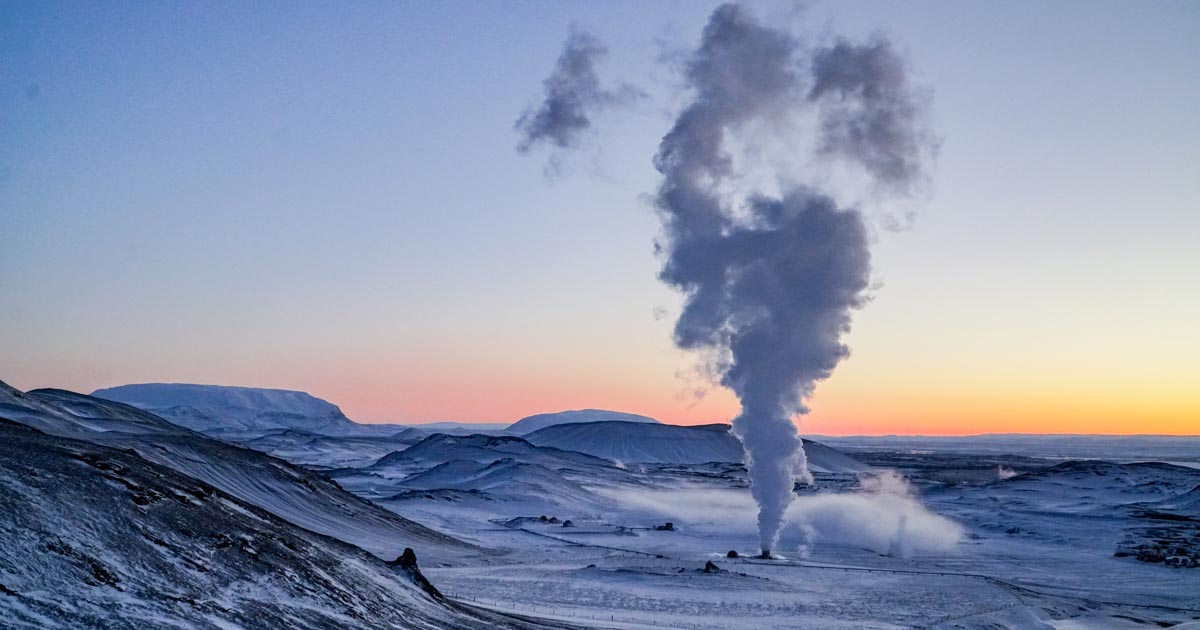Mankind has known for a long time that the earth's interior is quite hot and that this heat can be used. The Romans used natural hot water springs to supply their bathhouses, which we know today as thermal baths. How high the temperature in the center of the earth actually is, could not be clarified completely until today. Current estimates are over 6,000 degrees Celsius.

The German Geothermal Energy Association writes on its website that 30 per cent of the energy flow rising to the Earth's surface comes from the hot core of the Earth itself, 70 per cent is produced by the constant decay of natural radioactive elements in the Earth's mantle and crust. Every day, the Earth radiates about four times more energy than we humans currently consume.
Geothermal energy can already be used at shallow depths, for example via heat pumps. However, the far greater potential lies dormant further down. In deep geothermal energy, boreholes are drilled up to five kilometres deep. At this depth, the water is so hot that it can be used to operate powerful geothermal power plants. These can then supply entire city districts with hot water and emission-free electricity.
But despite several research projects, the potential is still largely untapped. In 2022, there were just 42 deep geothermal power plants in Germany with a total capacity of 360 megawatts. That is roughly equivalent to the output of a conventional coal-fired power plant. Nevertheless, studies assume that around a quarter of the heat supply in Germany could be covered by geothermal energy.
As a relevant side effect, deep drilling produces lithium, which is urgently needed for battery storage.
When it comes to the future of our energy supply, the topic of nuclear fusion cannot be completely ignored. In theory, nuclear fusion involves the fusion of two light atomic nuclei to form a new, heavier nucleus. This happens naturally, for example inside the sun, and releases large amounts of energy. The goal of nuclear fusion research is to make this energy economically usable.
Compared to nuclear fission, which we know from conventional nuclear reactors, the fusion of atoms has several advantages. The radioactive residues radiate less strongly and for a much shorter time (30-100 years), an uncontrolled chain reaction as in Fukushima is very unlikely and the hydrogen isotopes deuterium and tritium, which are available in sufficient quantities, come into question as fuels.
The disadvantages are quickly mentioned. So far, there is no nuclear fusion reactor in production operation worldwide, because the technical hurdles are high. Among other things, a fusion reactor must generate very high pressure and high temperatures in order to set fusion in motion. With ITER, an experimental reactor has been under construction in France since 2007 - but it will be some time before it can make a significant contribution to energy supply. In addition to the construction costs, which in the worst case could amount to well over 50 billion US dollars, the necessary funds for research and development must also be raised.
And there is still one problem to be solved: So far, the energy that has to be invested in nuclear fusion is significantly greater than the energy that is released during fusion.
The many innovative ideas that already exist show very clearly that a future with emission-free energy production is quite possible. They also show that our electricity can be generated in very different ways in the future, but always using the energy that is already available in nature: sun, wind, geothermal energy.
Text: Falk Hedemann
Part 1 of our series on innovations in renewable energies is about solar systems:
Part 2 deals with the use of wind power:
Most Popular